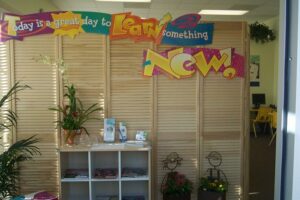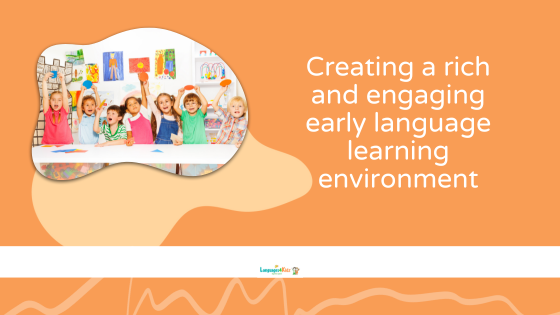🌟 Creating a Rich and Engaging Early Language Learning Environment 🌟
Teaching a second language to young children can be a very gratifying experience, and creating the correct environment is critical to allowing good learning.
It is critical to create an atmosphere of linguistic involvement and enjoyment in which each child and his family are welcomed and respected.
Here are some suggestions for creating an engaging and supportive environment for young learners:

Tips for Language Teachers with a Classroom!
- Arrange the furnishings in your classroom to support a variety of learning activities. Provide individual areas for quiet activities and a circle time area for group interactions.
- Set up specific learning centers in and around the classroom. These can include a reading corner with a pile of cushions that you can arrange on a carpet with picture books, an art and crafts station, a play area with toys related to the target language vocabulary, a listening station for playing music or stories in the target language, and an area with maps, flags, traditional clothing, and holidays and celebrations from various countries where the language is spoken.
- Decorate your classroom with posters of nursery rhymes and song lyrics, alphabet charts, colors, numbers, animals, fruits, and motions labeled in the target language. Identify things in the classroom by their names. Display frequent phrases and queries using sentence strips. This immerses children in the language, making it a natural part of their daily lives.
- Keep bulletin boards filled with images of children engaged in various classroom activities.
- Include hands-on activities that engage a variety of senses. To convey meaning, use props, puppets, and gestures. Play engaging games like Simon Says in the target language to boost vocabulary.
- Young children thrive in pleasant and familiar environments. You should occasionally encourage children to bring images or objects that mean something to them to share with their friends.
- Early childhood classes are quite active. Because young children learn by doing, there are many hands-on activities available, and children are encouraged to participate by acting out, gesticulating, role-playing, moving, singing, and dancing. You are asked to create an interesting and exciting linguistic environment.
- Keep in mind that creating a classroom where young children may learn effectively is an ongoing endeavor involving constant adaptation and creativity. By using these strategies, you may promote a happy learning environment while assisting young children in developing a strong foundation in the language.
Tips for Language Teachers on the Move!
For teachers without an assigned room, organization is key. It can be difficult, but you can handle this scenario successfully with the help of some creative strategies.
Here are some practical tips to help you carry your tools and materials from one room to another:
- A rolling cart or a backpack with wheels makes it easier for you to move your resources from one place to another, especially if you’re doing it frequently. You can carry your belongings more easily and keep them organized if you use color-coded or labeled containers and folders.
- Invest in a portable teaching toolkit with essentials like markers, flashcards, mini whiteboards, and interactive props.
- To prevent overloading yourself, consider what is truly necessary and prioritize materials that are adaptable and can serve a variety of tasks.
- Locate a wall or area where you can hang some of the charts and posters you’ll need for your lesson. Additionally, have a photo album of your class close at hand.
- Plan a resource exchange with other instructors if at all possible. To lighten your load, you can also ask to keep some items in shared areas.
- By keeping digital materials on a tablet or laptop, you can make use of technology. You can access materials in this way without having to carry physical copies. Young learners can be effectively engaged through interactive apps and electronic books.
- Establish a process for putting up and packing up in various rooms. This will reduce stress and make the procedure run more smoothly.
- Though it could be challenging, remember that your flexibility and dedication are having a beneficial effect on your young students. You can move through your mobile teaching journey more easily if you use these tactics. Keep up the fantastic work!






